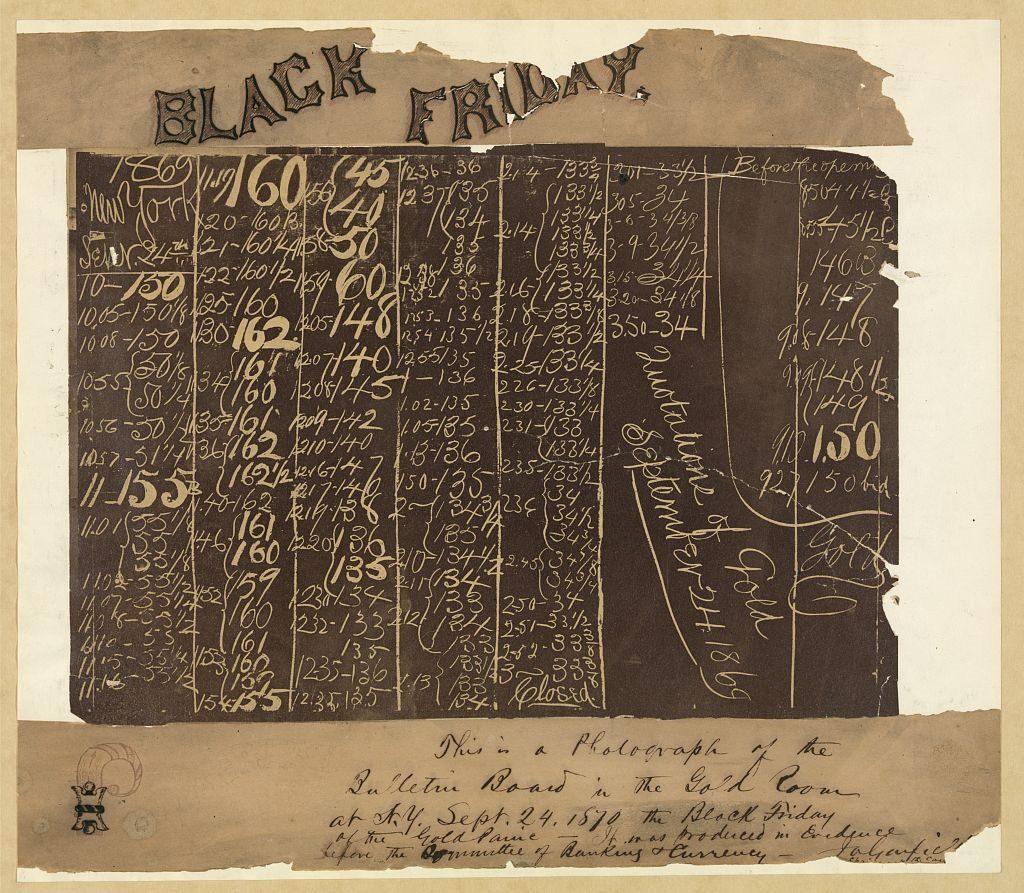The History of Black Friday | When Did Black Friday Start?
The History of “Black Friday”
Every fourth Friday of November, cost conscious consumers brave lines and gridlocked parking lots to fill their cars with presents, self-indulgences, and household necessities. The purchasing bonanza is now referred to as “Black Friday,” and many people incorrectly believe that this is because retailers finally get “into the black,” or begin to turn a profit for the year. This may indeed be the case, but the first time the expression “Black Friday” was used in recorded history was in 1869 on a dark day in presidential history and it had nothing to do with shopping.
Ulysses S. Grant, Gold, and a Football Rivalry
On the first “Black Friday,” 147 years ago, two crafty speculators moonlighting as railroad tycoons, James Fisk and Jay Gould, attempted to combine their newly formed wealth to drive up the price of gold by buying as much as they could without anyone noticing. At the same time, the two men conspired with President Ulysses S. Grant’s assistant treasurer to get inside information that helped them manipulate the New York Gold Exchange. All summer the price of gold soared and stock prices plunged. Fisk and Gould—who worked closely with the notoriously corrupt Boss Tweed and Tammany Hall—made a fortune.
When the federal government realized what was happening President Grant was humiliated and forced to sell $4,000,000 of federally held gold reserves (or over $70 million today) to normalize the market, but it was not enough—millions of dollars of wealth disappeared as a few fortunes were made, but many more were lost, including the savings of the middle class. The term “Black Friday” became a cliché to describe any Friday disaster, no matter how large or small.
In 1950s Philadelphia, “Black Friday” was the day before the annual Army-Navy football game, when rowdy fans from New York and Maryland would fill the city’s hotels, restaurants, bars, streets and stores. Thirty years later, noticing an uptick in sales on the Friday after Thanksgiving, retailers decided to flip the script and market “Black Friday” as the sales event of the year. It took over thirty years, but finally the marketing plan of some anonymous capitalist has worked beyond anyone’s wildest imagination.
Black Friday Today
Today, on “Black Friday,” hundreds of millions of consumers spend more money than on any other day of the year. But this has only been true for the last decade and in 2014, in-store spending was actually down 11% from the prior year. Still, down 11% meant $50.9 billion in sales, (including the weekend). Last year was a different story altogether, as shoppers broke the “Black Friday” in-store spending record, laying down a cool $67.5 billion at the counter (or on average $403 a person), which was $8 billion more than the previous record in 2012.
If you plan on braving the crowds this Holiday season, here are some tips to keep you safe while shopping.
Approximately 33,000 tire-related crashes occur each and every year, resulting in about...
The Ford C-Max Energi Electric car is being blamed for starting more...
“The findings in this analysis conducted for The Safety Institute are disturbing,...

